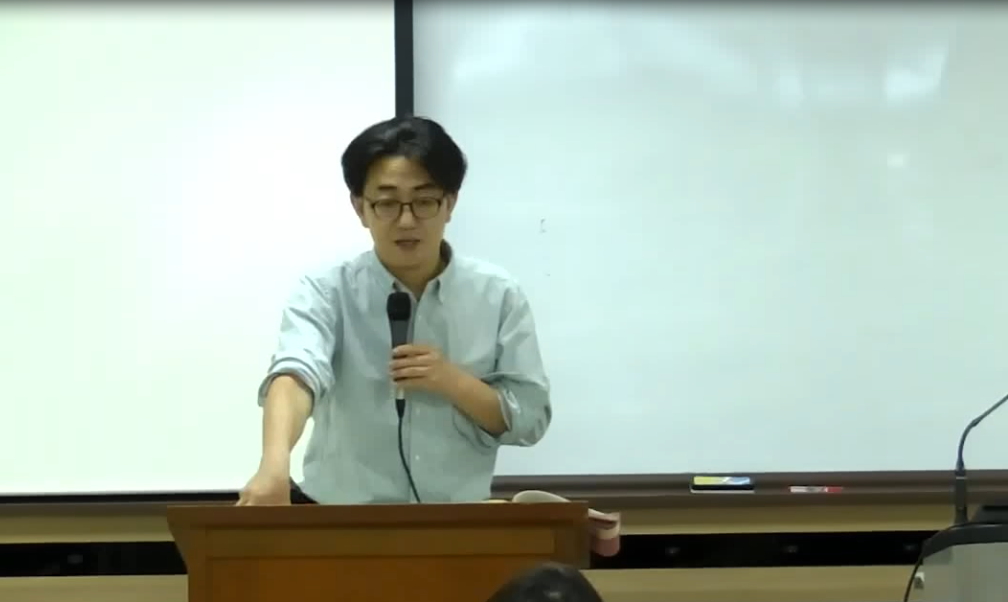한국 고대사회에서 불문법으로서의 관습법, 성문법으로서의 율령 은 주요한 키워드임은 틀림없다. 그러나 율령은 중국으로부터 수용된 법체계이기 때문에 고유/외래적 성격, 율령 반포 이...
http://chineseinput.net/에서 pinyin(병음)방식으로 중국어를 변환할 수 있습니다.
변환된 중국어를 복사하여 사용하시면 됩니다.
- 中文 을 입력하시려면 zhongwen을 입력하시고 space를누르시면됩니다.
- 北京 을 입력하시려면 beijing을 입력하시고 space를 누르시면 됩니다.
https://www.riss.kr/link?id=A106070678
- 저자
- 발행기관
- 학술지명
- 권호사항
-
발행연도
2019
-
작성언어
-
-
주제어
습속 ; 형법 ; 관습법 ; 규제법 ; 왕법 ; 국법 ; folksways ; criminal law ; customary law ; regulatory law ; King’s law ; state law
-
KDC
900
-
등재정보
KCI등재
-
자료형태
학술저널
-
수록면
45-76(32쪽)
-
KCI 피인용횟수
0
- DOI식별코드
- 제공처
- 소장기관
-
0
상세조회 -
0
다운로드
부가정보
국문 초록 (Abstract)
한국 고대사회에서 불문법으로서의 관습법, 성문법으로서의 율령 은 주요한 키워드임은 틀림없다. 그러나 율령은 중국으로부터 수용된 법체계이기 때문에 고유/외래적 성격, 율령 반포 이전/이후의 연속성 등의 문제가 논란이 되어 왔다. 다른 한편으로, 불문법에서 성문법으로의 전환에서 관습법 이 어떠한 의미를 가지는가에 대해서는 설명이 많이 부족한 상황이다. 이러한 문제 제기를 출발점으 로, 법체계를 제정법에 한정시키지 않고 평범한 행위자들 사이의 법이자 제정법의 法源으로서의 관습법을 포함하여 사회를 이해하고자 하였다. 다른 한 축으로는 사회 구성원들의 습속, 관습으로부터 시작되어 사회적으로 공식화하는 법의 형성 과정과 발전이라는 큰 틀에서 고대법을 설명하고자 하였다. 고대법의 기반은 사료에서 사회 구성원들을 규제하는 행위규범으로 등장하는 법과 속이었다. 속은 자연적, 경제적 여건으로부터 형성된 공동체 성원들의 의, 식, 주를 토대로 오랫동안 반복적으로 형성되어 온 공통된 성향이며, 인문·사회적 요소를 포괄하는 것이었다. 법은 ‘협의의 법’으로서 형법의 범주에 있으며 위반사항에 대한 제재가 동반된다. 이러한 속과 법이 고대사회에서의 관습법이었으 며, 이러한 행위 규범이 법적인 효력을 가지는 데에 공적 권력의 결정과 제재가 작동되는 것이었다. 이에 따른 법의 체계는 공적 권력에 의한 결정과 제재를 통한 규칙이 형성된 규제법과, 사회구성원들끼리 ‘관습을 따르는 것이 의무’라는 믿음이 전제된 관습법으로 설명할 수 있을 것이다. 고조선의 ‘범금 8조’의 경우, 제재의 주체가 개인, 공동체, 제3자의 개입·중재로 다양하게 나타나지만, 부여의 ‘用刑’을 시작으로 고구려에서는 귀족의 ‘評議’로 구체화된다. 더욱이 신라의 <냉수리비>에서는 귀족들의 ‘共論’이 언급되기도 하는데, 결국 최종적인 결정권자는 왕이었다. 삼국사기 에 등장하는 ‘왕법’은 왕명에 따른 법을 뜻하는 것이었고, 그 과정에서 귀족들의 평의도 결정에 일정정도 영향을 미쳤던 것이다. 왕이 귀족들에 대한 배타적인 권력을 독점함으로써 왕은 초월적 지위를 가지게 되었으며, 이는 국가체제의 정비와 함께 이루어진 일이었다. 율령의 반포는 국가체제 정비의 일환이었으며, 국가 시스템에 의해 작동되는 규제법은 신라 <적성비>에서 언급되었던 ‘국법’이라고 할수 있다.
다국어 초록 (Multilingual Abstract)
It is clear that customary law as a unwritten law, and Yulryeong (律令) as a statute law are main key words of Korean ancient society. However, since Yulryeong is a legal system accepted from China, there has been controversy about its nature whethe...
It is clear that customary law as a unwritten law, and Yulryeong (律令) as a statute law are main key words of Korean ancient society. However, since Yulryeong is a legal system accepted from China, there has been controversy about its nature whether it is indigenous or foreign, and about continuity between before and after the promulgation of Yulryeong. Meanwhile, there is much lack of explanation as to the meaning of customary law in the transition from unwritten law to statute law. Taking this problem posing as a starting point, this study attempted to understand the society by including the customary law as the law between the ordinary actors and the source of the law of legislation, without limiting the legal system to the legislation. On the other hand, this study tried to explain the ancient law through the large frame of the formation process and development of the law which starts from the folkways and customs of the social members and was formalized socially. The foundation of the ancient law was a law and folkways that emerged as a norm of behavior that regulates members of society in the historical records. Folkways are common tendency that has been repeatedly formed over a long period of time based on the food, clothing and shelter of the community members formed from natural and economic conditions, and they encompass humanistic and social elements. A law is a narrow-scope law , which is in the category of criminal law and accompanies sanctions for violations. These folkways and law were customary law in ancient society, and the decision of state power and sanctions were operated to have the legal effect of these norms of behavior. Therefore, the system of the law can be explained by the regulatory law which is formed by the decisions and sanctions by state power, and the customary law which is based on the belief that observation of customs is a duty among the members of society. In the case of Gojoseon s Beomgeum 8 clauses(犯禁八條) , the subject of sanctions is varied by individual, community, and third party intervention and arbitration. However, starting from use punishment(用刑) of Buyeo(夫餘), conference(評議) of the nobility appeared in Koguryo(高句麗). Moreover, the deliberation(共論) of the nobles was mentioned in the Silla Stele of Naengsuri in Yeongil, and the final decision maker was the king. The King s law, which appeared in The Chronicles of the Three State(三國史記), meant the law according to the king s command, and the nobles conference also had some influence on the decision. By monopolizing the exclusive power over the nobles, king secured transcendent position, and this was conducted with the maintenance of the state system. The Promulgation of Yulryeong was a part of the maintenance of the state system and the regulatory law operated by the state system could be called the state law mentioned in the Silla Stele of Jeoksung in Danyang.
목차 (Table of Contents)
- Ⅰ. 머리말: 문제의 출발점 Ⅱ. 기존 한국학계의 고대 법의 단계구분 Ⅲ. 규제법으로서의 ‘왕법’과 ‘국법’ 1. 공적 권력에 기반한 규제법의 등장 2. 王命과 귀족평의에 기반한 ‘왕법’ 3. 율령에 입각한 ‘국법’ Ⅳ. 맺음말
- Ⅰ. 머리말: 문제의 출발점 Ⅱ. 기존 한국학계의 고대 법의 단계구분 Ⅲ. 규제법으로서의 ‘왕법’과 ‘국법’ 1. 공적 권력에 기반한 규제법의 등장 2. 王命과 귀족평의에 기반한 ‘왕법’ 3. 율령에 입각한 ‘국법’ Ⅳ. 맺음말
참고문헌 (Reference)
1 한영화, "한국 고대사회의 형벌권의 추이-‘율령’ 반포 이전을 중심으로-" 고려사학회 (47) : 7-34, 2012
2 홍승우, "한국 고대 율령의 성격" 서울대학교 대학원 2011
3 장진번, "중국법제사" 소나무 2006
4 홍승현, "중국 고대의 이풍약속 : 황제와 사대부의 관계를 중심으로" 서강대학교 대학원 2003
5 한영화, "신라 상대의 王命과 “國法”의 성립 과정" 호서사학회 (85) : 49-83, 2018
6 김창석, "신라 법제의 형성 과정과 율령의 성격-포항 중성리신라비의 검토를 중심으로-" 한국고대사학회 (58) : 171-215, 2010
7 최병조, "로마법상의 慣習과 慣習法―고전 법률가들의 사례를 중심으로―" 법학연구소 47 (47): 1-50, 2006
8 노중국, "고구려율령에 대한 일시론" 21 : 1979
9 김영하, "강좌 한국고대사 2" 2003
10 鄭東俊, "高句麗‧百濟律令における中國王朝の影響についての試論-所謂「泰始律令繼受說」をめぐって" 210 : 2013
1 한영화, "한국 고대사회의 형벌권의 추이-‘율령’ 반포 이전을 중심으로-" 고려사학회 (47) : 7-34, 2012
2 홍승우, "한국 고대 율령의 성격" 서울대학교 대학원 2011
3 장진번, "중국법제사" 소나무 2006
4 홍승현, "중국 고대의 이풍약속 : 황제와 사대부의 관계를 중심으로" 서강대학교 대학원 2003
5 한영화, "신라 상대의 王命과 “國法”의 성립 과정" 호서사학회 (85) : 49-83, 2018
6 김창석, "신라 법제의 형성 과정과 율령의 성격-포항 중성리신라비의 검토를 중심으로-" 한국고대사학회 (58) : 171-215, 2010
7 최병조, "로마법상의 慣習과 慣習法―고전 법률가들의 사례를 중심으로―" 법학연구소 47 (47): 1-50, 2006
8 노중국, "고구려율령에 대한 일시론" 21 : 1979
9 김영하, "강좌 한국고대사 2" 2003
10 鄭東俊, "高句麗‧百濟律令における中國王朝の影響についての試論-所謂「泰始律令繼受說」をめぐって" 210 : 2013
11 朱甫暾, "韓國社會發展史論" 일조각 1992
12 박병호, "韓國法制史" 민속원 2012
13 "隋書"
14 "舊唐書"
15 廣瀨薰雄, "秦漢律令硏究" 汲古書院 2010
16 長谷山彰, "日本古代の法と裁判" 創文社 2002
17 "新唐書"
18 鄭東俊, "古代東アジアにおける法制度の傳播と變容-中國王朝と朝鮮三國の影響關係を中心に-" 早稲田大学 2016
19 滋賀秀三, "中國法制史論集-法典と刑罰" 創文社 2003
20 "三國遺事"
21 유성국, "三國時代 裁判制度" 한국법사학회 (24) : 5-38, 2001
22 "三國志"
23 "三國史記"
24 한영화, "『三國志』 東夷傳에 보이는 한국 고대사회의 俗과 法" 수선사학회 (43) : 151-176, 2012
25 井上光貞, "『(岩波講座)世界歷史』6(古代6)" 岩波書店 1971
26 김수태, "「집안고구려비」에 보이는 율령제" 한국고대사학회 (72) : 37-82, 2013
27 강진원, "「集安高句麗碑文」 건국신화의 성립과 변천" 수선사학회 (61) : 47-76, 2017
28 한영화, "7∼8세기 신라의 형률과 그 운용 -君臣關係에 관한 형률 적용 사례를 중심으로-" 한국고대사학회 (44) : 229-267, 2006
29 김창석, "5세기 이전 고구려의 王命體系와 집안고구려비의 ‘敎’ㆍ‘令’" 한국고대사학회 (75) : 265-304, 2014
30 김도현, "(법사회학 관점에서 보는)법이란 무엇인가" 동국대학교출판부 2007
동일학술지(권/호) 다른 논문
-
- 한국외국어대학교(글로벌캠퍼스) 역사문화연구소
- 이화승
- 2019
- KCI등재
-
단재 신채호의 체포·신문(臺灣 基隆) 관련 자료 발굴과 사실 고증
- 한국외국어대학교 역사문화연구소
- 許 元(Huh, Won)
- 2019
- KCI등재
-
태종 7-8년 世子(讓寧大君) 朝見의 정치사적 의미 - 태종 왕통과 대명관계의 상관성에 대한 분석 -
- 한국외국어대학교 역사문화연구소
- 윤 정(Yoon, Jeong)
- 2019
- KCI등재
-
1919년 상해 임시정부 수립 과정에 대한 재검토 -임정수립 기념일 논란을 중심으로
- 한국외국어대학교 역사문화연구소
- 반병률(Ban, Byung Yool)
- 2019
- KCI등재
분석정보
인용정보 인용지수 설명보기
학술지 이력
| 연월일 | 이력구분 | 이력상세 | 등재구분 |
|---|---|---|---|
| 2026 | 평가예정 | 재인증평가 신청대상 (재인증) | |
| 2020-01-01 | 평가 | 등재학술지 유지 (재인증) |  |
| 2017-01-01 | 평가 | 등재학술지 유지 (계속평가) |  |
| 2013-01-01 | 평가 | 등재학술지 유지 (등재유지) |  |
| 2010-01-01 | 평가 | 등재학술지 유지 (등재유지) |  |
| 2008-01-01 | 평가 | 등재학술지 유지 (등재유지) |  |
| 2005-05-31 | 학술지명변경 | 한글명 : 외대사학 -> 역사문화연구 |  |
| 2005-01-01 | 평가 | 등재학술지 선정 (등재후보2차) |  |
| 2004-01-01 | 평가 | 등재후보 1차 PASS (등재후보1차) |  |
| 2002-01-01 | 평가 | 등재후보학술지 선정 (신규평가) |  |
학술지 인용정보
| 기준연도 | WOS-KCI 통합IF(2년) | KCIF(2년) | KCIF(3년) |
|---|---|---|---|
| 2016 | 0.75 | 0.75 | 0.64 |
| KCIF(4년) | KCIF(5년) | 중심성지수(3년) | 즉시성지수 |
| 0.56 | 0.49 | 1.216 | 0.28 |





 스콜라
스콜라







